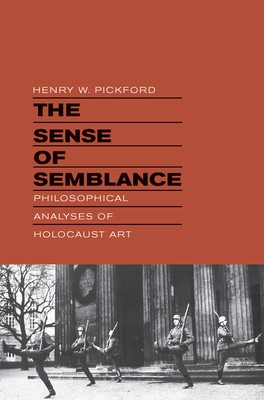
- We will send in 10–14 business days.
- Author: Henry W Pickford
- Publisher: Modern Language Initiative
- ISBN-10: 0823245403
- ISBN-13: 9780823245406
- Format: 15.5 x 23.1 x 2.3 cm, kieti viršeliai
- Language: English
- SAVE -10% with code: EXTRA
Reviews
Description
Holocaust artworks intuitively must fulfill at least two criteria: artistic (lest they be merely historical documents) and historical (lest they distort the Holocaust or become merely artworks). The Sense of Semblance locates this problematic within philosophical aesthetics, as a version of the conflict between aesthetic autonomy and heteronomy, and argues that Adorno's dialectic of aesthetic semblance describes the normative demand that artworks maintain a dynamic tension between the two. The Sense of Semblance aims to move beyond familiar debates surrounding postmodernism by demonstrating the usefulness of contemporary theories of meaning and
understanding, including those from the analytic tradition. Pickford shows how the causal theory of names, the philosophy of tacit knowledge, the analytic philosophy of quotation, Sartre's theory of the imaginary, the epistemology of testimony, and Walter Benjamin's dialectical image can help explicate how individual artworks fulfill artistic and historical desiderata.
EXTRA 10 % discount with code: EXTRA
The promotion ends in 22d.14:54:13
The discount code is valid when purchasing from 10 €. Discounts do not stack.
- Author: Henry W Pickford
- Publisher: Modern Language Initiative
- ISBN-10: 0823245403
- ISBN-13: 9780823245406
- Format: 15.5 x 23.1 x 2.3 cm, kieti viršeliai
- Language: English English
Holocaust artworks intuitively must fulfill at least two criteria: artistic (lest they be merely historical documents) and historical (lest they distort the Holocaust or become merely artworks). The Sense of Semblance locates this problematic within philosophical aesthetics, as a version of the conflict between aesthetic autonomy and heteronomy, and argues that Adorno's dialectic of aesthetic semblance describes the normative demand that artworks maintain a dynamic tension between the two. The Sense of Semblance aims to move beyond familiar debates surrounding postmodernism by demonstrating the usefulness of contemporary theories of meaning and
understanding, including those from the analytic tradition. Pickford shows how the causal theory of names, the philosophy of tacit knowledge, the analytic philosophy of quotation, Sartre's theory of the imaginary, the epistemology of testimony, and Walter Benjamin's dialectical image can help explicate how individual artworks fulfill artistic and historical desiderata.


Reviews